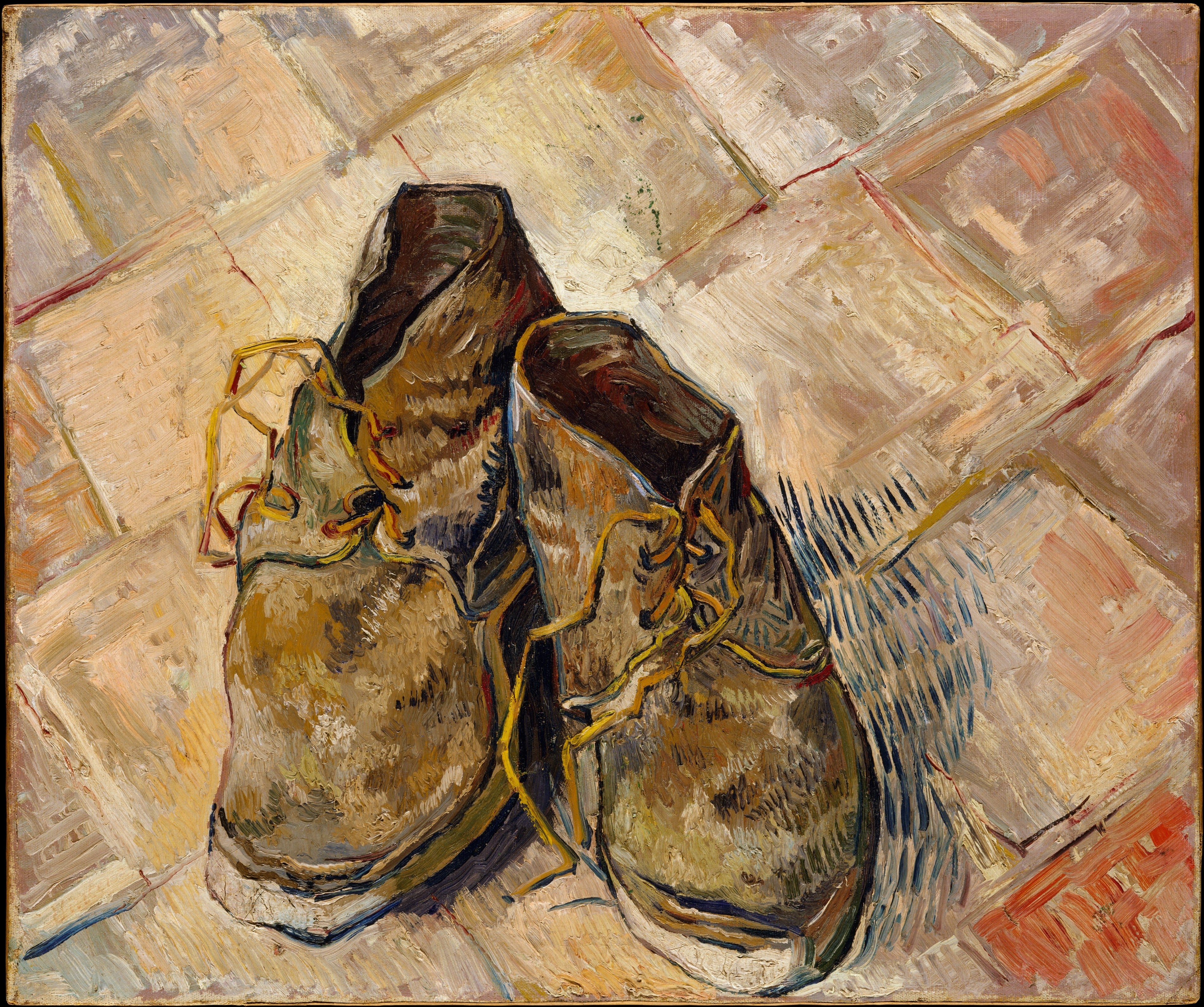
A Pair of Shoes
"A Pair of Shoes", painted in Arles in 1888, marks a poignant return to one of Vincent van Gogh’s recurring subjects: the humble, worn shoe. While he painted several such studies during his earlier Paris period, often as meditative still lifes stripped of context, this version introduces a powerful sense of place and personality. Set against the unmistakable red-tile floor of the Yellow House, the shoes are no longer anonymous objects—they are grounded, both literally and symbolically, in the artist’s personal world.
The composition exudes Van Gogh’s characteristic emotional intensity. The shoes—mud-caked, misshapen, and visibly worn—speak of toil and endurance. Their rough texture and sagging forms contrast strikingly with the vivid geometry of the terracotta floor, rendered in bold, expressive brushstrokes. The placement within the domestic space of the Yellow House—a symbol of Van Gogh’s aspirations for artistic community and stability—adds layers of meaning to what might otherwise be seen as a simple still life.
Art historians have speculated that these may be more than just generic work shoes. One compelling theory links them to Patience Escalier, an elderly Provençal peasant and former gardener whose portrait Van Gogh painted around the same time in the late summer of 1888. If true, the painting transforms into a quiet portrait in absence—a tribute not only to the laboring class but to an individual whose life is echoed in the sturdy, timeworn leather of his footwear.
In this context, the shoes become a deeply human symbol: of aging, of work, of groundedness, and perhaps of mortality. Through his brush, Van Gogh elevates the ordinary into the profound, imbuing a pair of old shoes with empathy, mystery, and a quiet dignity that lingers long after the eye has moved on.
Choose options


A Pair of Shoes
About Artist

Vincent van Gogh
